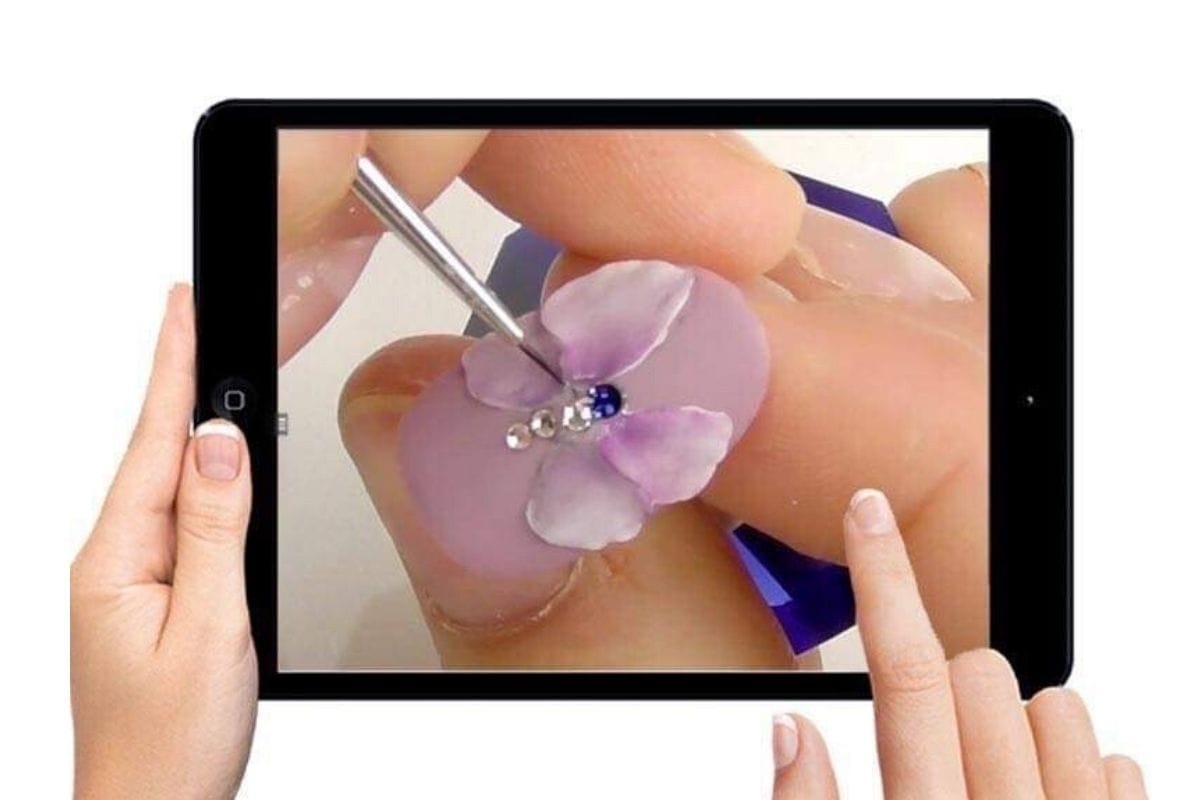
Face-to-face vs. online nail education
By Katie Barnes | 04 February 2020 | Expert Advice, Feature

In the last decade, online learning in the nail industry has become increasingly popular. Let’s discuss the pros and cons of both learning methods.
It doesn’t have to be online learning vs face to face learning; a case of one or the other. Instead, these can work hand in hand to provide valuable learning and maximise results.
While online learning is valuable in many industries, successfully mastering a trade skill, especially for beginners with this method alone can prove difficult. Online learning is only suitable for refresher skills. Most insurance companies won’t cover online learning, especially for beginner classes as alone it is not considered sufficient, with a lack of assessment evidence being available to the tutor.
 Just as the nail industry is saturated with techs teaching nail courses without holding a teaching qualification, the same applies for online learning. YouTube, social media live broadcasts and private groups have made online learning too accessible and it can be hard to know what information and education is reliable.
Just as the nail industry is saturated with techs teaching nail courses without holding a teaching qualification, the same applies for online learning. YouTube, social media live broadcasts and private groups have made online learning too accessible and it can be hard to know what information and education is reliable.
When choosing online education, choosing an educator with a formal teaching qualification and an abundance of experience in their field is absolutely paramount.
Don’t seek a nail tech that offers nice nail art but has no teaching experience and therefore substance to their ‘training course’. Professional filming and quality is also an essential element to consider because without this the intricate detail may be unclear and therefore difficult to follow.
What face to face training represents is the ability to discuss, practice, and be visually assessed with personalised tutor guidance throughout the session.
Most online learning is a ‘one size fits all’ experience that doesn’t recognise individual learning needs where face to face education does. With the exception of some (such as Sam Biddle’s online courses) learning, if you become stuck on a particular element, your tutor and peers won’t be readily available to provide feedback on the spot, making any further progression at that stage tricky.
It can be harder to communicate and get across any questions or misunderstandings you have with online learning as a written question can be your only method of clarifying this on some platforms. On the flip side, an online course allows you to pause, rewind and repeat content as many times as you require and provides convenience. Online training accommodates students by allowing them the flexibility to attend learning at a time and location that is convenient for them.
 When you carry out an online training course, it is as an individual rather than a group, and therefore presents an opportunity for you to learn unaccompanied. This can require more discipline to ensure deadlines are adhered to. To some this is ideal and to others, a class and group is preferred and recommended for both networking and to bounce off your peers.
When you carry out an online training course, it is as an individual rather than a group, and therefore presents an opportunity for you to learn unaccompanied. This can require more discipline to ensure deadlines are adhered to. To some this is ideal and to others, a class and group is preferred and recommended for both networking and to bounce off your peers.
Online courses will usually be much cheaper than face to face education. Some companies will provide an assessment and certificate upon submission of case studies and additional work being carried out at an additional cost.
Creating online learning requires a higher level of digital literacy, or the ability to navigate, evaluate, and create information using a range of computer skills, including an online course management system.
When attending face to face education, there will be only be so much knowledge that you can absorb in one session. If this is not practiced straight away, much will be lost making the attendance of the class redundant. This is where online educations’ biggest benefit lies. If your educator offers online learning, this is the perfect opportunity to refresh the skills taught while continuing your training and learning.
Love Katie B x
Katie & Sam Biddle run online courses alongside face to face education. Click to find out more about:

Read the latest issue









